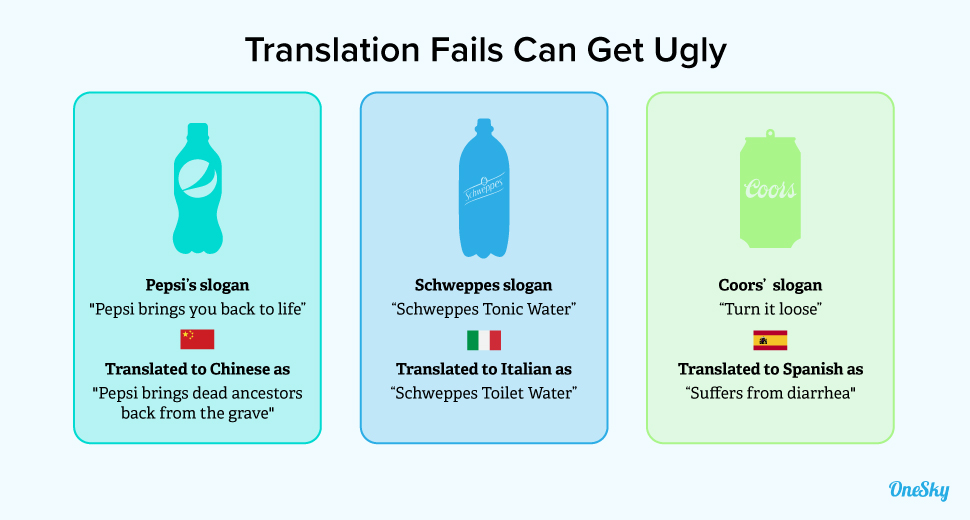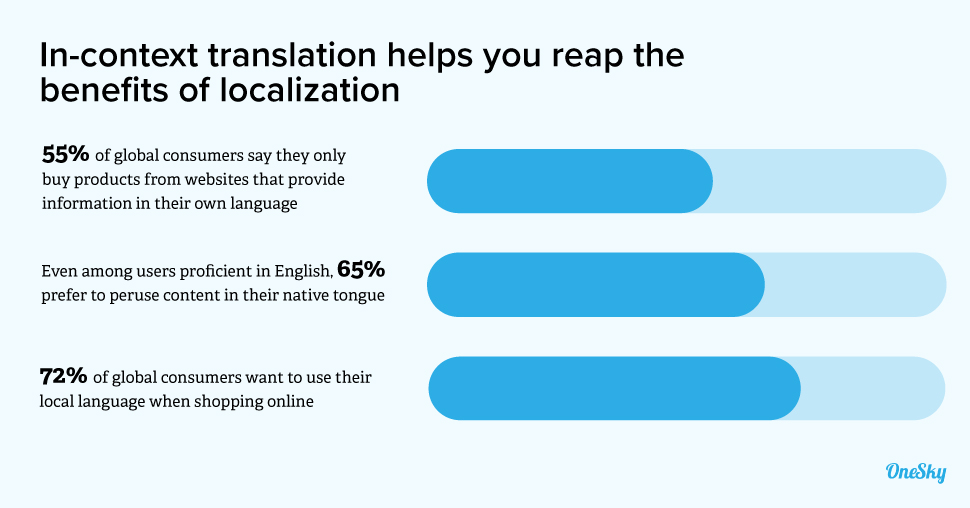How To Find, Fix, and Prevent Translation Errors
We all make mistakes, and translators are no exception.
But translation errors can lead to costly and devastating circumstances.
The good news is that most translation errors are preventable if you know what to look for, have the appropriate resources, and implement the right systems.
The Costly Consequences of Translation Errors
Translation errors can increase project costs, delay the launch timeline, impact your reputation, offend your audience, and even land you in legal hot water. Here’s what you need to know.
Types of Translation Errors
Here are some common yet often-overlooked translation errors:
- Being too literal: Direct translations are often clunky, and some may even be appalling. They can confuse customers, damage your brand image, and offend the audience.

- Lack of cultural nuances: Translations can be grammatically correct but miss out on critical linguistic information, failing to resonate with the target audience.
- Misinterpreted tone: The inability to capture the tone of the original text could skew the message and lead to unintended results.
- Culturally inappropriate images: Audiences may not resonate with or get confused by visual content that doesn’t carry the same cultural connotations.
- Neglecting regional variations: People in different regions may speak the same language with variations. Your translations could miss the mark if they fail to incorporate locale-specific vocabulary and linguistic norms.
- Not hiring professional translators: Brands that try to cut costs by having internal staff handle translations often end up with poor-quality content that requires expensive rework.
- Skimping on quality assurance(QA): Even the best translators make linguistic and grammatical mistakes. A proper QA process can help you catch these errors.
- Inconsistent translations: Discrepancies in tone and word usage across various touchpoints can impact your brand image and confuse your audience.
Causes of Translation Errors
Low-quality source materials can lead to translation errors. Even the most skilled translators can’t fix poorly written original content. Unfortunately, many companies send files riddled with clumsy phrases and careless mistakes to their translation teams.
Translation errors are also common when brands fail to provide translators with context. For example, translators may have trouble interpreting source text full of a company’s tribal language, such as acronyms, jargon, and insider phrases.

Additionally, translators may have difficulty creating content with the appropriate tone and length for the intended purpose if they aren’t given the necessary background information (e.g., how the text will appear on a packaging or website.)
Without a translation style guide and glossaries, you could leave your translation team guessing the tone and style you want to achieve with your message. This can also result in inconsistency across your content and negatively impact your brand image.
Lastly, not using the appropriate resources can lead to costly mistakes. For example, neglecting to have experienced linguists and subject matter experts review the final content could leave subtle mistakes unaddressed, even if you use a professional translation team.
The Risks of Translation Errors
If you catch a mistake before the content goes public, you may have to reprint a brochure or push back your website launch date—delaying the timeline and driving up costs.
If an error is discovered after a piece of content has gone live, the consequence could be more damaging. For example, a mistranslated label could cause misuse or refund requests. Visitors may leave your website because they don’t resonate with the content or have difficulty navigating the information. An inappropriate word choice could offend your audience and damage your brand image.
Even worse, a mistake in a user manual could lead to damages or injuries with legal ramifications. One mistranslated word in a legal document could cost your company dearly.
Translation errors not only add to project costs and delay launch dates. They can also lead to dissatisfied customers, tarnished brand reputation, legal issues, and even penalties if they aren’t caught in time.
How To Prevent Translation Errors
Translation errors happen once in a while, but you can take steps to prevent them and fix them in time to minimize their impact.
Don’t Rely on Machine Translations
Even though machine translation has come a long way and can help speed up the translation process, it often falls short because of the lack of context. Not to mention, machines can’t grasp cultural nuances that are key to creating high-quality translations.
Have human translators review machine-translated content to ensure that it’s accurate, captures the message’s intent, and addresses the cultural background of the target audience.

Hire Professional Translators
Don’t skimp on hiring experienced professionals who understand the translation process and have a track record of delivering high-quality translations. Besides being fluent in the target language, your translators should understand the cultural nuances.
They should be able to use idioms and slang appropriately, reference the local culture, and help you navigate sensitive topics. They should also have a good grasp of the subject matter. For example, hire translators who are native speakers and avid gamers active in the local gaming community when you localize a video game.
Start With Good Quality Source Content
“Garbage in, garbage out”—no matter how good your translators are, they need high-quality input to generate accurate outputs. As such, it’s critical to provide clear, concise, and error-free source materials to your translation team.
Proofread the source content and fix mistakes before sending the files to your translators. Simplify messaging and limit the use of slang and cultural references that may not translate well. Identify content that requires transcreation to accurately communicate the message.
Provide Contextual Information
Translators must address the environment in which the translated content is implemented to communicate the message’s intent and emotional appeal accurately. As such, you should provide background about the original text and other pertinent information about the context.
For example, when localizing a video game, send information about the storyline and background of each character to help translators capture the emotional appeal of the narrative.
Establish Translation Guidelines
High-quality translations are not only accurate but also consistent across different touchpoints. For example, the same naming convention should be used on your website, brochure, and social media. When updating software, use the same terminologies in all versions.
Since most translation projects use multiple translators, you should create a translation style guide and glossaries and store these linguistic assets in a centralized location, such as a localization management system, so everyone on your team can refer to the latest documents at all times.
Conduct Quality Assurance (QA)
Proofreading and QA should be an integral part of any localization process. Use tools such as spellcheckers and computer-aided translation (CAT) software to help identify translation errors and hire a dedicated team of QA professionals to review the final content.
Use a localization management platform to track bugs and facilitate communications among reviewers and translators, so you can be sure that all the errors are captured and fixed cost-efficiently.

A Holistic Approach To Translation and Localization
A holistic approach to translation and localization can help you prevent many translation errors.
When you use a holistic translation service, you can access a pool of professionals with different cultural backgrounds and expertise in various subject matters to ensure accurate transitions and add value to each project.
You should also use a translation management system (TMS) that allows you to easily communicate contextual information—especially visual context when you’re localizing software, apps, games, and websites—to help improve accuracy.
Implementing the right systems and using the appropriate resources can help you avoid embarrassing linguistic or cultural mistakes, create content that appeals to local audiences, and ensure regulatory compliance.
OneSky is an end-to-end localization management platform with robust features, such as terms glossary, TMS, workflow automation, string context, testing, and more. It helps you manage translation projects cost-effectively while minimizing errors and delays.
You can also gain access to a dedicated translation manager and over 1,000 professional translations fluent in 50+ languages to produce accurate and high-quality translations for everything from websites and apps to games and software.
Try OneSky for free to see how we can help you minimize the risks and costs of translation errors.



 Written by -
Written by - 




 Written by
Written by 


